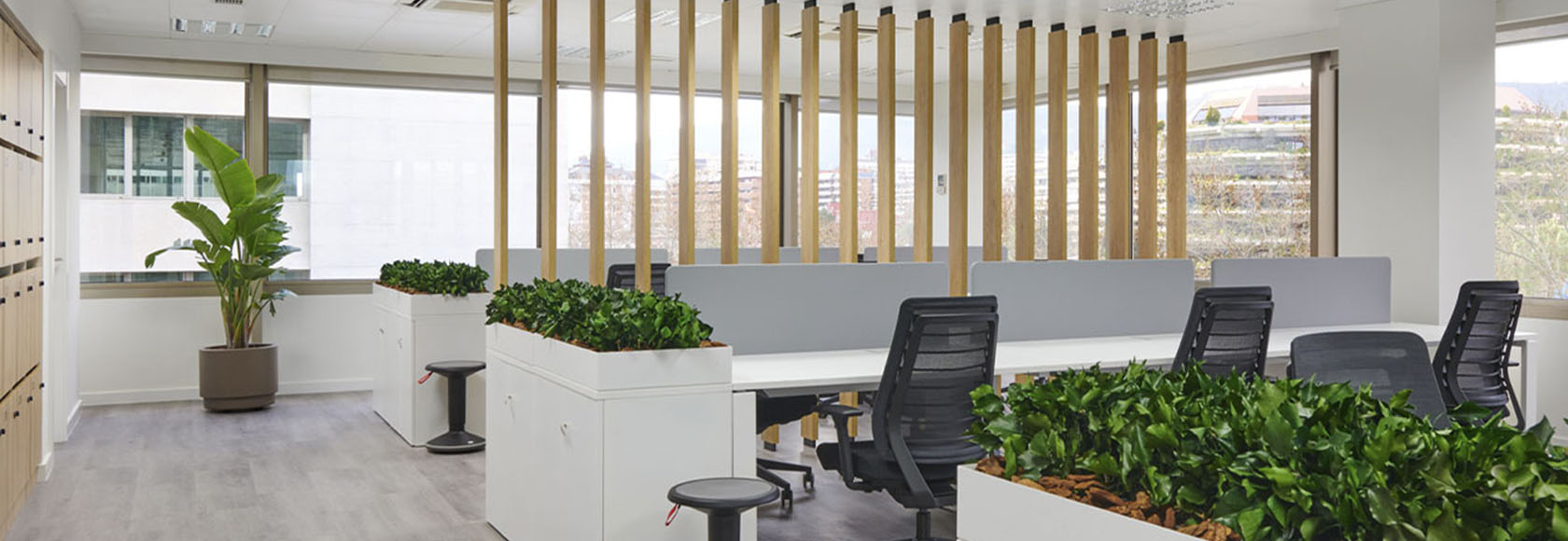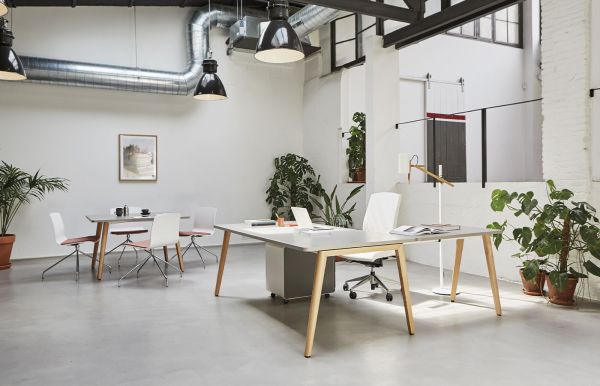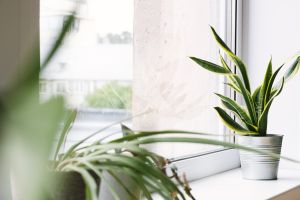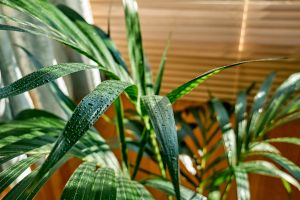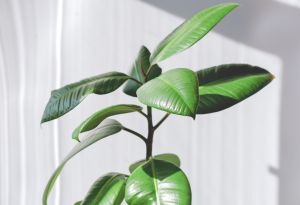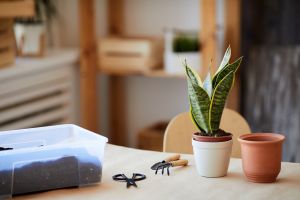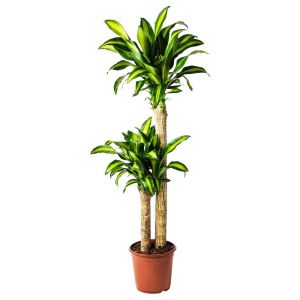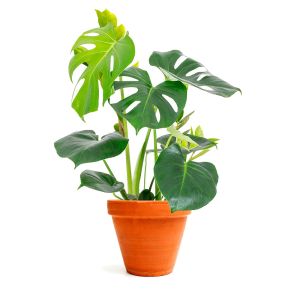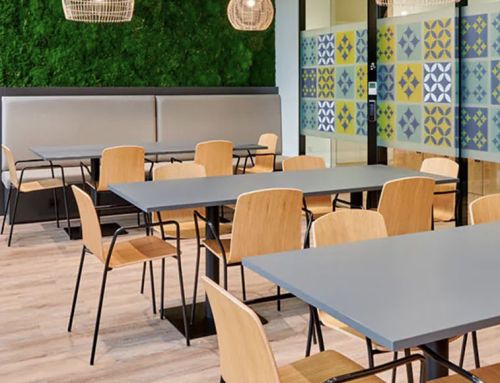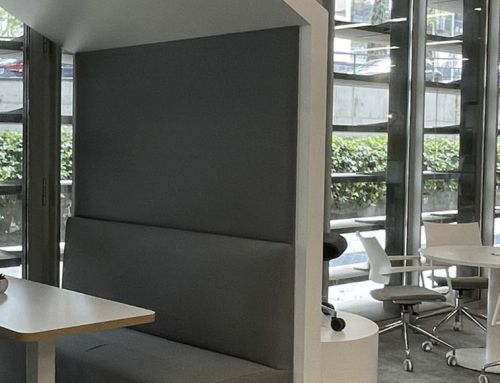Find out which plants for the office will help you create a more pleasant and healthy work environment. In addition to being an excellent decorative option, plants offer multiple benefits for the physical and mental health of workers, improving the air they breathe and reducing stress and eyestrain.
A very interesting aesthetic and visual option is, for example, the incorporation of plants in the office furniture itself, as we can see in these offices. In the projects area of this Web, you will find more examples.
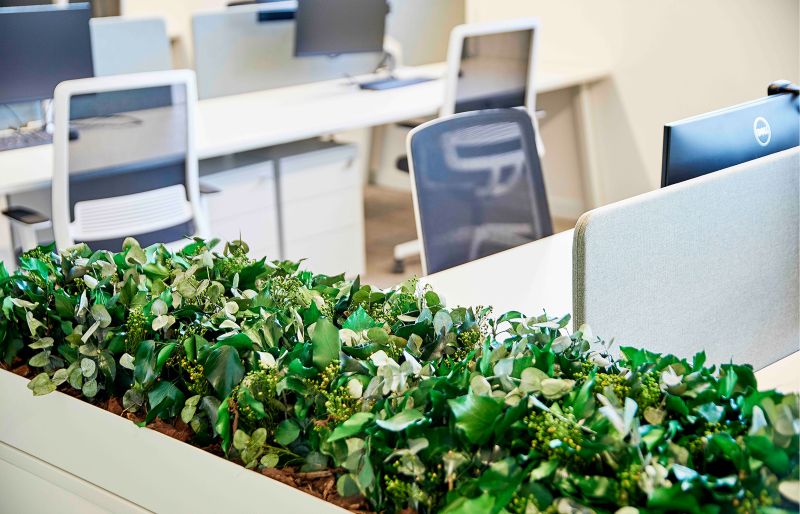
Plants for the office, why they are important
The presence of plants is associated with greater health and well-being. Studies show that indoor air quality can be up to five times worse than outdoor air, which can cause respiratory problems, fatigue and headaches in workers. Office plants are able to purify the air by absorbing harmful gases and pollutant particles through their leaves and roots. In addition, the presence of plants in the office helps reduce stress and improve productivity. The connection with nature has a calming and relaxing effect, which decreases stress levels and increases creativity and concentration.
Another relevant aspect of having plants for the office is their positive impact on visual health. In offices, a lot of time is spent in front of computer screens, which can cause eyestrain and headaches. Plants help reduce these symptoms through their ability to filter light and reduce glare. In addition, plants can act as acoustic barriers, absorbing noise and improving the quality of the sound environment.
Plants can also help improve work efficiency. Studies have shown that workers are able to perform tasks faster and more accurately when surrounded by plants. In addition, plants for the office can enhance creativity and stimulate innovation by providing an inspiring environment to work in.
Biophilia and its relation to plants for the office
Connecting with nature has become a growing trend in interior decorating and workspace planning. Biophilia is the term used to describe this trend, which is based on the idea that humans have an innate connection with nature and that nature can enhance well-being and productivity. Incorporating plants for the office is an effective way to apply this concept.
In addition, biophilia encourages a more sustainable approach to workspace planning by promoting the use of natural and sustainable materials, such as wood, bamboo or cork. By using them, the environmental impact of the office can be reduced. Plants for the office also contribute to this sustainable approach by improving indoor air quality and providing a natural and healthy environment, as we have discussed.
Finally, the trend towards biophilia and plants for the office also has positive implications for companies in terms of corporate image, thanks to the staging of the companies’ commitment to the planet.
In the following paragraphs we will talk about how to choose the best plants for the office and how to keep them healthy.
- L
The best plants for the office: characteristics and care
When choosing plants for the office, it is important to consider factors such as available space, lighting and ease of care. Here are some choices of plants for the office:
- Sansevieria: Also known as “mother-in-law’s tongue,” this plant is hardy and can survive in low light conditions and with little watering. It is ideal for those inexperienced in plant care.
- Peperomia: This houseplant is very popular in offices because of its thick, colorful leaves. It requires bright indirect light and moderate watering.
- Potos: This houseplant is easy to care for and can grow in places with low light. In addition, it is known for its air-purifying properties.
- Dracaena: This plant is hardy and easy to care for, and is also known for its air-purifying properties. It requires bright indirect light and moderate watering.
- Ficus: This indoor plant is ideal for large spaces, as it can grow up to 3 meters in height. It requires bright indirect light and moderate watering.
- The trunk of Brazil: Perfect for any space with natural light, but without direct sunlight.
- Kentia: a palm that grows very well indoors and withstands dry environments very well.
- Adam’s Rib or Montsera Deliciosa: It grows well and is perfect for the office with simple pruning.
How to choose the right plants for the office according to the available space and lighting
When choosing plants for the office, it is important to consider the available space and lighting. Some plants require more space and light than others, so it is important to select the right plants according to office conditions. For small spaces, hanging plants are a good option, as they do not take up much floor space. Plants such as English Ivy or African Violet are ideal for hanging in pots or baskets. For spaces with low light, shade plants are the best option. Plants such as Potos or Boston Fern can grow in places with little natural light. For spaces with indirect light, plants such as Sansevieria or Dracaena can be used. For spaces with lots of light, plants that require direct light are the best choice. Plants such as Christmas cactus or Ficus need a lot of light to grow properly.
In addition to space and lighting, it is important to consider ease of care when selecting the right office plants. If you are inexperienced in plant care, you can choose hardy and easy to care for plants such as Sansevieria or Potos. Finally, it is important to remember that all plants require some level of care to remain healthy. This includes watering them regularly, but not too much, providing adequate light and fertilizing them.
